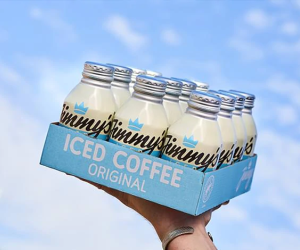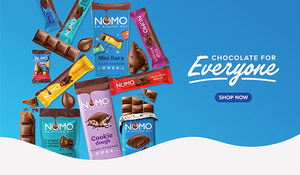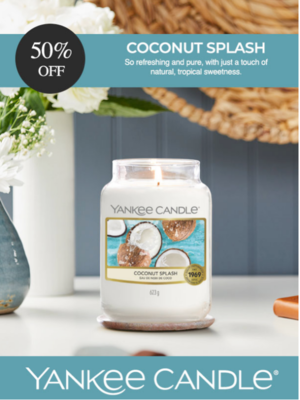Learn to craft delicious and guilt-free homemade ice cream with these low-fat alternatives. Flavour without compromising on health.
Ice cream is a delicious, indulgence that many of us enjoy, but let’s face it, Ice Cream is not often associated with healthiness.
But what if we told you that you could indulge in the creamy, delectably, delicious world of ice cream without the guilt? Yes, you heard that right! We’re here to spill the scoop on crafting your own guilt-free frozen treats using low-fat alternatives that won’t compromise on flavour.
Say goodbye to double cream and hello to inventive alternatives that still deliver that satisfying sweetness you crave.
With some creativity and adaptations, there are ways to savour that creamy, sweet goodness while still making mindful choices for our well-being.
In this article, we’ll delve into the world of low-fat alternatives for homemade ice cream, exploring how you can create scrumptious frozen treats that are not only delicious but also better for your health. We’ll also share with you our recipe for a Low-Fat Homemade Berry Greek Yoghurt Ice Cream.
If you prefer you can go straight to the recipe by clicking the link below, or read along to find out more.
Maintaining the Flavour, Reducing the Guilt!
Explore delicious dairy-free treats that make your taste buds tingle while also providing your body with healthy goodness. Find creative ways to enjoy the flavour without feeling guilty. We’ll show you ways that you can enjoy your ice cream and still be healthy. It’s satisfying without the guilt!
It must be noted that with all our Homemade Ice Cream recipes, there are always low-fat or low-calorie alternatives to double cream that can be used. In fact in certain Homemade Ice Creams, these alternatives actually work better!
Please bear this in mind when you are looking through our recipes – all of them can be tweaked and adapted to be healthier versions. That’s the beauty of Homemade Ice Cream, Sorbets, Gelato’s, and Froyo’s – you have the ability to adapt to your exact needs.
Being more conscious and aware of what ingredients we use in our homemade frozen treats, can empower us to make healthier choices. With certain adaptations, our recipes can accommodate vegetarians, vegans, those with Lactose intolerances, and in some cases Diabetics too. Please see our post – Diabetes and Ice Cream: Making a Healthier Choice – for more information.
The Magic of Dairy-Free Alternatives.
 When it comes to crafting healthier ice creams, dairy-free alternatives are the stars. Rice milk, oat milk, coconut milk, soy milk, and almond milk are like superheroes in creating low-fat ice cream.
When it comes to crafting healthier ice creams, dairy-free alternatives are the stars. Rice milk, oat milk, coconut milk, soy milk, and almond milk are like superheroes in creating low-fat ice cream.
These plant-based wonders not only offer creamy textures but also bring a wealth of nutritional benefits to the table.
Here is some more information on the different options available:
- Reduced-fat milk: Using 2% or skim milk instead of double cream can significantly reduce the fat content of the ice cream. However, it’s important to note that the texture may be slightly less creamy compared to using double cream.
- Coconut milk: Full-fat or light coconut milk can be used as a dairy-free alternative to double cream. Coconut milk adds a creamy texture and a hint of coconut flavour to the ice cream. Bear in mind, that different brands of Coconut milk can offer more than just a hint of coconut flavour so you’ll need to be mindful when using this alternative as it can change the flavour of your chosen ice cream. Not a problem of course if you’re making Coconut Ice Cream!
- Cashew cream: Soaked and blended cashews can create a creamy base for the ice cream. Cashew cream is a popular choice for vegan and dairy-free ice cream recipes.
- Rice Milk: Rice milk, derived from brown or white rice, is naturally sweeter and lighter in fat, making it an ideal base for fruity sorbets and fruit-based frozen treats. With a smooth texture and minimal fat content, rice milk creates a refreshing canvas that allows the vibrant flavours of each fruit to shine through. The mild sweetness of rice milk complements tangy fruits like berries, citrus, and tropical, resulting in guilt-free treats that burst with natural goodness.
- Oat Milk: Oat milk, the creamy contender, lends a rich texture and slight oatiness to your ice cream creations. With a consistency akin to traditional dairy cream, oat milk effortlessly creates velvety bases that pair beautifully with flavours like chocolate, coffee, and even spiced concoctions. Plus, oat milk brings its fibre-rich goodness to the bowl, adding a touch of heartiness to your icy concoctions – Creaminess without Compromise.
- Almond Milk: Almond milk, with its nutty undertones, provides a delicate canvas for infusing with your favourite ingredients adding an elegant dimension to your homemade ice creams. Its lightness makes it perfect for lighter flavours like vanilla, coconut, and delicate floral infusions. Almond milk’s subtle notes play well with a variety of mix-ins, from fresh fruits to chopped nuts and even herbal elements. Plus, its low-calorie profile ensures you get to savour every spoonful without any ounce of guilt – Nutty Elegance in Every Bite.
 It’s worth mentioning that using these alternatives may result in a slightly different texture and flavour compared to traditional ice cream made with double cream. However, these alternatives can still provide a delicious, creamy and healthier option.
It’s worth mentioning that using these alternatives may result in a slightly different texture and flavour compared to traditional ice cream made with double cream. However, these alternatives can still provide a delicious, creamy and healthier option.
Summarising, some low-fat or low-calorie alternatives to double cream in homemade ice cream include reduced-fat milk, coconut milk, and cashew cream. These alternatives can help reduce the fat content while still maintaining a creamy texture.
Healthier Choices for Your Homemade Ice Cream.
- Use healthier ingredients: Substitute high-fat dairy products with low-fat or non-dairy alternatives like almond milk or coconut milk. Use natural sweeteners like honey, maple syrup, agave, or Stevia instead of refined sugar.
- Consider a milder salt: If using salt in your recipe, instead of using regular table salt, use a milder-tasting salt like Himalayan pink rock salt or fleur de sel. This will help to balance out the sweetness without overpowering the flavour.
- Make your own sauces or coulis: Store-bought caramel sauces and fruit coulis are often high in sugar and artificial ingredients. Making your own salted caramel sauce using natural ingredients can help reduce the sugar content and make your homemade ice cream healthier.
- Reduce portion sizes: Enjoying homemade ice cream in moderation can help to reduce the overall calorie and sugar intake. Consider using smaller bowls or cones to help control portion sizes.
 As you can see there are multiple ways that you can make homemade ice cream healthier, such as using healthier ingredients, a milder salt, making your own caramel sauces, and coulis, and reducing portion sizes.
As you can see there are multiple ways that you can make homemade ice cream healthier, such as using healthier ingredients, a milder salt, making your own caramel sauces, and coulis, and reducing portion sizes.
By making these small changes, you can enjoy this delicious treat while still maintaining a balanced and healthy diet.
Whether you opt for rice milk’s sweet simplicity, oat milk’s luxurious creaminess, or almond milk’s nutty elegance, these low-fat alternatives are here to transform your ice cream dreams.
So, with the above ideas in mind, let’s take a look at an easy low-fat Homemade Ice Cream recipe.
Innovative Ingredients – Delicious Low-Fat Frozen Creations.
When making low-fat ice cream, you can use more than just the usual ingredients. Modern ice cream creation is all about being creative and trying new things.
You can use nut butters, plant-based milks, and natural sweeteners to make unique frozen treats.
These creative substitutions not only reduce the fat content but also introduce exciting new textures and flavours. Whether it’s the creamy richness of cashew cream, the refreshing zing of citrus zest, or the velvety smoothness of avocado, each ingredient contributes its own unique twist to the frozen delight.
By exploring this innovative approach, you’ll uncover a treasure trove of low-fat recipes that will redefine the way you think about indulgence.
With all the above-mentioned alternatives and ideas in mind, let’s take a look at a Low-Fat Homemade Ice Cream recipe, along with methods of how you can create this delicious low-fat frozen treat in the comfort of your kitchen.
Low-Fat Berry Greek Yoghurt Ice Cream Recipe
Ingredients:
- 250ml Greek yoghurt (low-fat or fat-free)
- 125g mixed berries (such as strawberries, blueberries, raspberries)
- 30ml honey, or sweetener of your choice (Agave, Maple Syrup, Stevia, or Erythritol)
- 1 teaspoon vanilla extract
Method:
- Prepare the Berries:
- Wash the berries thoroughly and pat them dry with a paper towel.
- Chop larger berries, like strawberries, into smaller pieces for easier blending.
- Blend the Berries:
- In a blender or food processor, combine the mixed berries and honey.
- Blend until you have a smooth berry puree.
- Mix with Greek Yoghurt:
- In a mixing bowl, combine the Greek yoghurt, vanilla extract, and berry puree.
- Mix well until the mixture is evenly blended and has a consistent colour.
- Chill the Mixture:
- Place the mixture in the refrigerator for about 1 hour to chill. This helps enhance the flavours and makes it easier to churn.
- Churn the Ice Cream:
- If you have an ice cream maker, follow the manufacturer’s instructions to churn the mixture until it reaches a soft, ice cream-like consistency.
- NB: If you don’t have an ice cream maker, you can still make this recipe. Pour the mixture into a freezer-safe container and freeze. Every 30 minutes, stir the mixture vigorously with a fork to break up ice crystals, repeating this process for about 3-4 hours or until the ice cream is firm. Please also check out our post – Homemade Ice Cream: Without an Ice Cream Maker – to learn more.
- If you have an ice cream maker, follow the manufacturer’s instructions to churn the mixture until it reaches a soft, ice cream-like consistency.
- Freeze the Ice Cream:
- Pour the almost-set ice cream into an airtight container.
- Place the container in the freezer and allow it to freeze for about 4-6 hours, or until firm.
- Serve and Enjoy:
- Once the ice cream is fully frozen, scoop it into bowls or cones.
- Garnish with fresh berries, if desired.
This low-fat berry Greek yoghurt ice cream is not only delicious but also a healthier alternative to traditional ice cream.
It’s rich in protein and contains the natural sweetness of berries and a touch of honey. Enjoy it guilt-free and savour the refreshing flavours!
We hope that you have enjoyed our article – Low-Fat Homemade Ice Cream – Indulgence Without The Guilt – and that we have inspired you to try out some homemade low-fat ice cream yourself.
If you have any questions, please drop us a comment below and we will be happy to get back to you.
Stay connected for more homemade ice cream inspiration! Share your homemade ice cream masterpieces with us on social media, and connect with a community of ice cream enthusiasts. Join us for mouthwatering recipes, expert tips, and exclusive updates. Follow us on Pinterest, Instagram, Facebook, and X by clicking on any of the social media icons below.







































Wow, this article is a treasure trove of information for all the ice cream lovers out there! 🍦 It’s so cool to learn that we can actually indulge in delicious ice cream without feeling guilty about our health.
I always thought ice cream had to be super creamy and loaded with calories, but this article totally changed my perspective. The idea of using alternatives like rice milk, oat milk, and almond milk as bases for ice cream is so creative! And it’s awesome that these plant-based options bring not only creamy textures but also nutritional benefits to the bowl.
I also appreciate the tips on making healthier choices, like using natural sweeteners and making your own sauces. It’s great to know that we can enjoy our favorite treat while still being mindful of our well-being.
And that low-fat berry Greek yogurt ice cream recipe sounds amazing! 😋 It’s awesome that it’s rich in protein and uses natural sweetness from berries and honey. I can’t wait to try making it and enjoy a guilt-free indulgence.
Thanks for sharing these fantastic ideas and methods for creating healthier homemade ice cream. Who knew that we could have pure indulgence without the guilt? 🙌🏼🍨
Hey Les,
Thanks for your comment.
We wanted to show that delicious Homemade Ice Cream can be accessible to everyone.
Our post about Low-fat alternatives opens up lots of ideas, tips, and fresh ideas to many who may feel due to their health or dietary needs they can’t indulge in ice cream, sorbets, or other delish sweet treats.
Whereas, by making a few adjustments, a delicious, low-fat guilt-free treat is possible.
In some cases, as mentioned in the article, alternative milks in fact make our homemade ice creams even better.
Check out our post – A Classic Cherry Bakewell Homemade Ice Cream – in this instance, Almond Milk works better than regular whole milk.
Should you give our Low-fat Berry Greek Yoghurt Ice cream a try, we’d love to hear how you get on and how you feel a Low-Fat alternative compares.
Thanks again for dropping by and really glad you appreciated the article.
Cherie :o)
This is a fantastic dish for any person looking to appreciate gelato without the sense of guilt! I like exactly how you’ve discovered a means to delight in a sweet reward while keeping it light and healthy. The idea of using low-fat ingredients while still achieving that luscious texture is amazing. From my own experience, making homemade gelato is not just enjoyable yet additionally a great means to manage the ingredients and make it fit individual dietary demands. I’m delighted to try this recipe, specifically due to the fact that it seems like an ideal equilibrium of flavor and agility.
I have some questions: Can this dish be made a lot more versatile by substituting ingredients, such as utilizing non-dairy milk or sweeteners? I have been checking out different ingredients and would certainly appreciate any guidance on adjusting this recipe to suit numerous dietary choices. In addition, the length of time do you recommend allowing the gelato rest before serving to accomplish the optimum appearance?
On the whole, this blog post is a wonderful locate for anybody that enjoys gelato yet wants a healthier variation. It’s nice to know you can still indulge without the added calories. Many thanks for sharing such a tasty and guilt-free treat!
Hey Mr. Cool,
Thank you so much for your comment. So glad that you found the recipe inspiring and that it aligns with your goal of enjoying sweet treats in a lighter, healthier way. Homemade gelato really is such a wonderful way to customise flavours and ingredients to suit individual dietary needs.
To make this recipe more versatile, absolutely—you can substitute ingredients to suit various dietary preferences! For a non-dairy version, I recommend using plant-based milks like almond, coconut, or oat milk, which still provide a creamy texture. Adding a splash of full-fat coconut milk or a tablespoon of cashew butter can help mimic the richness of traditional dairy. If you’re exploring alternative sweeteners, options like stevia, monk fruit, or agave syrup work well and keep the recipe light while maintaining sweetness.
I’ve written about these substitutions in more detail in our articles on Homemade Dairy-Free & Lactose-Free Ice Cream Recipes and Vegan And Dairy-Free Homemade Ice Cream Using Coconut Milk—you might find those helpful for further experimenting with this recipe.
As for resting time, I recommend letting the gelato sit at room temperature for about 5–10 minutes before serving. This softens it slightly and allows the flavours to shine while achieving the perfect scoopable texture.
Thank you again for your thoughtful feedback and questions.
Wishing you lots of success and joy on your gelato-making journey.
Best wishes,
Cherie